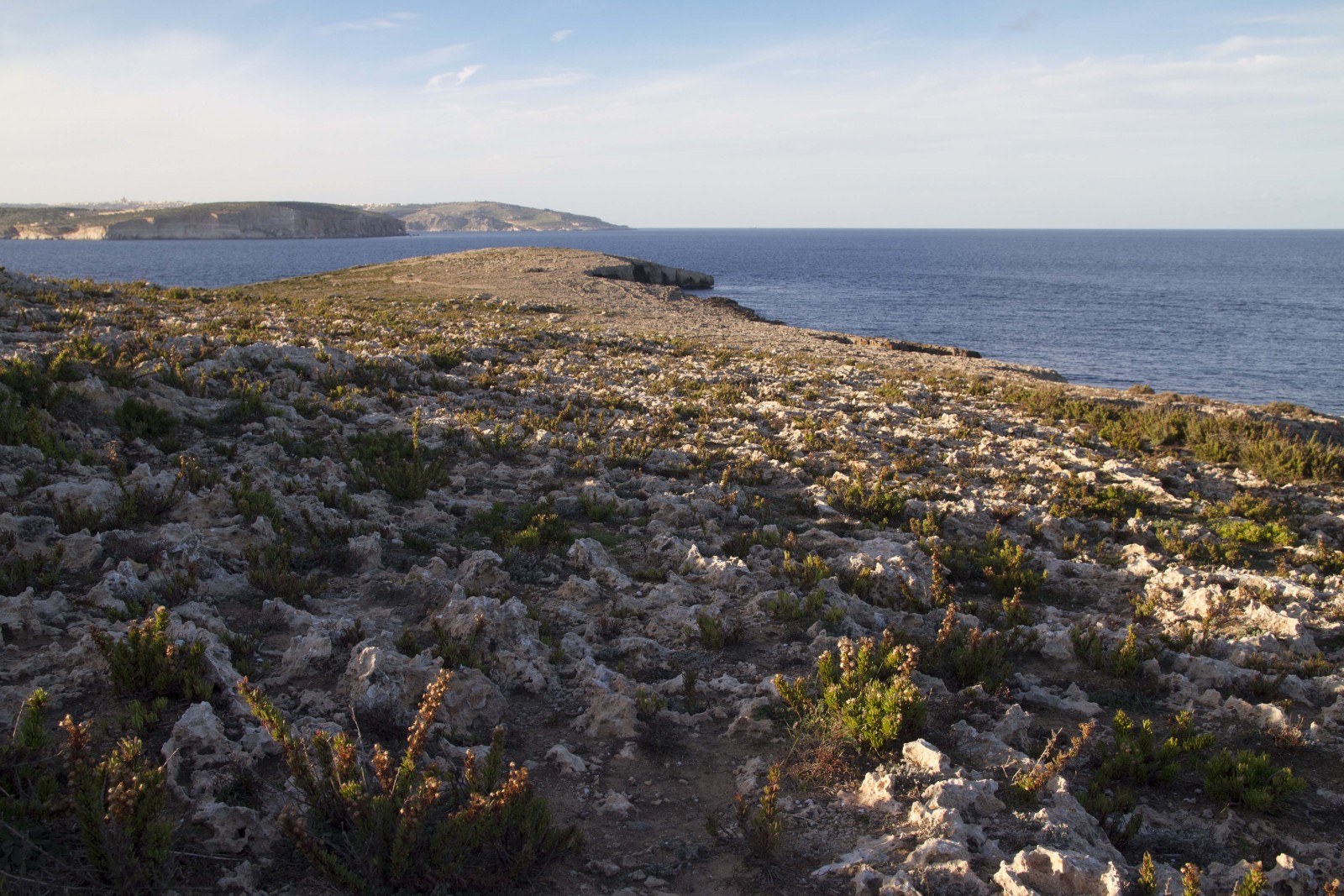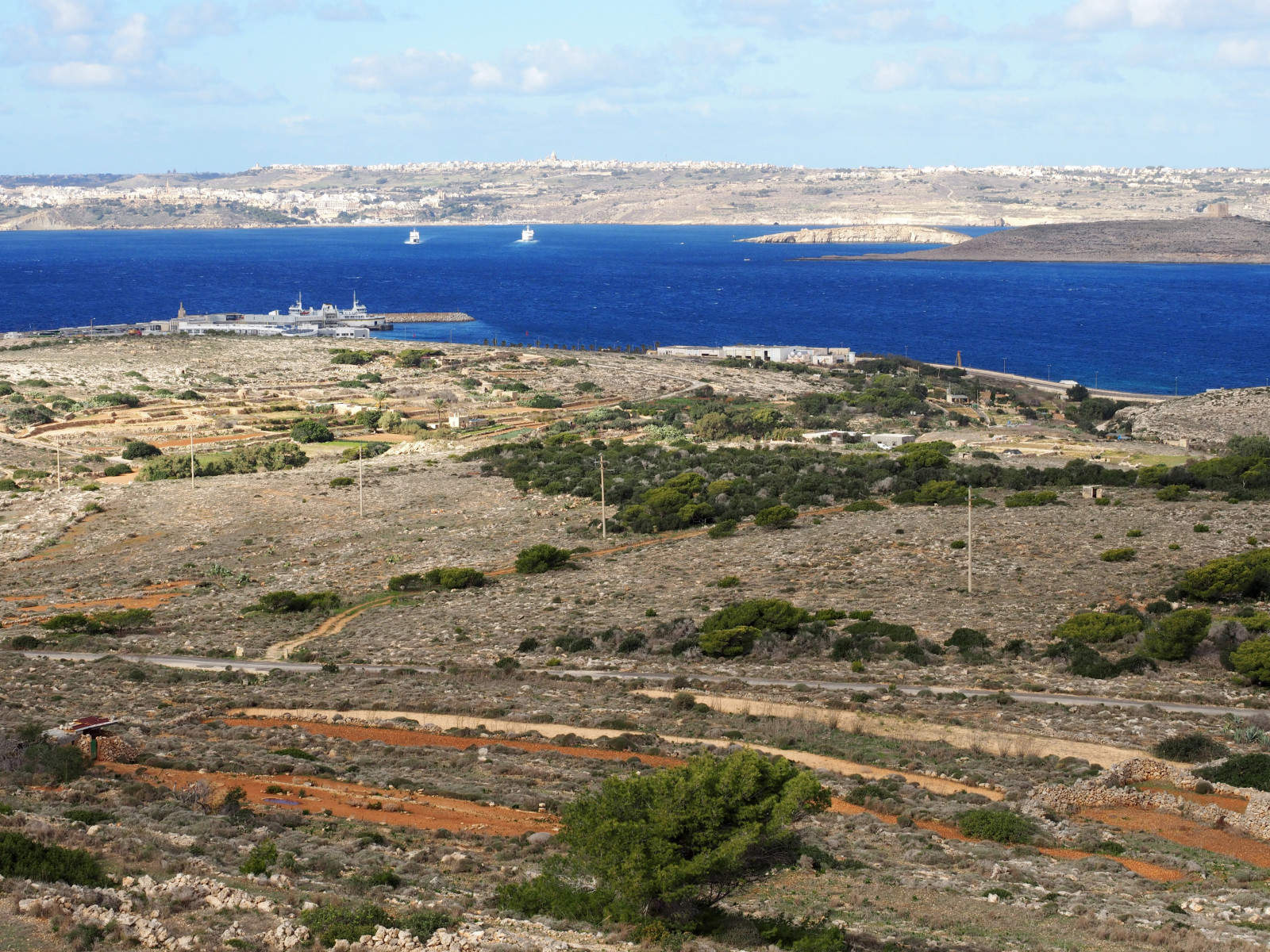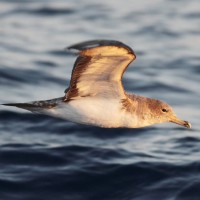Descrição
The northernmost part of Malta. Apart from its stunning landscape, Rdum tal-Madonna is perhaps best known for its 500 pair-strong Pardela do Mediterrâneo colony, the largest colony on the islands, but the peninsula has more to offer.
The mix of landscape ranging from small fields lined by rubble walls and fruit trees, to garrigue and wild boulder scree to sheer sea cliffs, provides habitat for a wide range of breeding and migrating species. It’s a great place to explore on the way to Gozo or Comino, or when visiting Għadira Nature Reserve. However, one can also dedicate whole days to sea-watching along the Malta-Gozo channel in spring. On quiet days, birding can be supplemented by a swim at the stunning Coral Lagoon or a visit to the White and Red Towers, built by the Knights of St John.
Detalhes
Acesso
The area is best explored by walking or cycling, but a surfaced road runs parallel to the ridge. Several of the smaller roads are rough and unsurfaced.
The bus stop ‘Qammiegħ’ below the Red Tower, at which routes 41, 42, 101, 221, 222 stop enroute to Ċirkewwa, is a good place to start your walk. In summer route 49 takes you closer to Armier. If by car, park at the Radar Station or at the Chapel of the Immaculate Conception and explore the surrounding area by foot.
Terreno e Habitat
Steppe , Árvores e arbustos dispersos , Mar , Praia , AgriculturaCondições
RochosoCaminho circular
Simé útil um telescópio?
Pode ser útilBoa temporada de observação de aves
Inverno , PrimaveraMelhor hora para visitar
Inverno , PrimaveraRota
Estrada pavimentada , Estrada não pavimentada , Caminho largoCaminho dificil
Caminhada médiaAcessível por
Pé , Bicicleta , CarroAbrigo/plataforma deobservação de aves
NãoInformação extra
From February to April large number of wildfowl and other birds like herons and waders pass through the sea channel between Malta and Gozo/Comino. The best days are those before a full moon. For this type of birding patience and a telescope are needed. While more scenic watch points can be found along the peninsula, the best is perhaps Ċirkewwa.
Pardela do Mediterrâneo and Cagarra-do-mediterrânico can be seen in flight over the waves from land especially before sunset or on windy days. They can also be heard calling on still nights from the Immaculate Conception Chapel in their respective breeding seasons.
For open landscape migrant birds like Poupa, wheatears and chats the best time of year is March to early May. Breeding birds like the Melro-azul can be found along all the cliff coast, while the calhandrinha and Toutinegra-tomilheira are best found close to the radar station in garrigue habitat.
Parts of the cliff coast are crucial for nesting seabirds, please help in their conservation by not leaving any litter in the area (which in turn attracts rats), and refrain from using lights at night, going on board boat trips with load music passing close to the cliffs. BirdLife Malta has through three consecutive EU LIFE-funded projects worked to improve the conservation of the Pardela do Mediterrâneo at Rdum tal-Madonna. For more information visit the project websites below.




